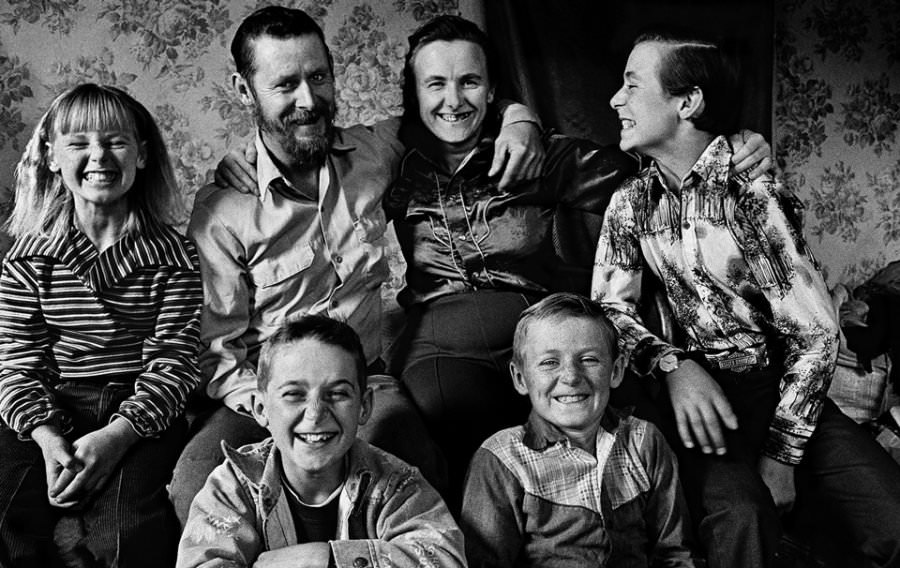In the 1980s and 1990s, Maine was often thought of as a beautiful place, known for its rocky coastline, lighthouses, and lobster shacks. Tourists came for the stunning views and the quiet charm of small seaside towns. But just beyond the tourist spots, life looked very different for many people. Poverty was a reality for a significant number of families who lived away from the well-kept coastal areas. These were the people photographer Steven Rubin met and documented in his travels around the state, starting in 1982.
Rubin hitchhiked through Maine with little money, moving away from the coastline and into the rural parts of the state. He found communities that were struggling to survive. Unlike the picturesque Maine seen on postcards, these areas faced long-standing poverty. Many of the families living in these regions were working-class or poor, and they often had jobs that barely paid enough to cover basic needs. Rubin’s photographs captured this side of Maine, showing the difficult conditions people faced every day..
Read more
Inland Maine, especially in rural parts, was economically dependent on industries like logging, farming, and manufacturing. However, by the 1980s, many of these industries were in decline. Mills were closing, and jobs that had once provided stable incomes were disappearing. This left many people without steady work. In some cases, entire towns were affected when a large employer shut down. The loss of jobs led to a cycle of poverty that was hard to escape. Without work, families struggled to pay for housing, food, and other necessities.
The harsh winters in Maine only made things worse for those living in poverty. Heating costs were high, and many people had to choose between keeping their homes warm or buying food. Some families relied on food stamps and government assistance, but that wasn’t always enough. In some rural areas, it was difficult to access services like healthcare or reliable public transportation, making it even harder for people to improve their situations.
Housing was another issue. While the coastal areas featured well-maintained homes and vacation rentals, many inland communities had houses that were run-down and in need of repair. Some homes had poor insulation, broken windows, or leaking roofs. These conditions made it even more difficult for families to stay warm in the winter. For some, living in trailers or poorly constructed homes was the only option they could afford.
Education was also a challenge in these poorer regions. Schools in rural areas often had fewer resources than those in wealthier parts of the state. Teachers were dedicated, but they faced difficulties with limited funding. Many students came from families where parents were working multiple low-paying jobs or were unemployed. This meant that students didn’t always have the support they needed at home to succeed in school. Dropping out of high school was not uncommon, especially for teenagers who needed to work to help support their families.
Healthcare services were often lacking in rural parts of Maine during this time. Hospitals and clinics were few and far between, making it hard for people to get the medical care they needed. Many people couldn’t afford to see a doctor, and they often went without treatment for illnesses or injuries. This was especially hard on older adults and those with chronic health conditions. Traveling to a hospital or clinic could take hours, and without proper transportation, some people simply didn’t go.
Rubin’s photographs showed the real lives of these people. He returned to Maine many times, building relationships with families and documenting their day-to-day struggles. His work highlighted the deep contrast between the poverty in inland Maine and the wealth seen along the coast. The images revealed the dignity and resilience of the people he met, but they also showed the harsh realities of living in poverty.
In some ways, poverty in Maine during the 1980s and 1990s was hidden. It wasn’t in the tourist towns or along the scenic routes. It existed in small, isolated communities, far from the eyes of visitors. People living in these areas didn’t have the same opportunities as those in wealthier parts of the state. The jobs available to them were often low-paying and unstable, and the safety nets meant to help them were not always enough to meet their needs.














